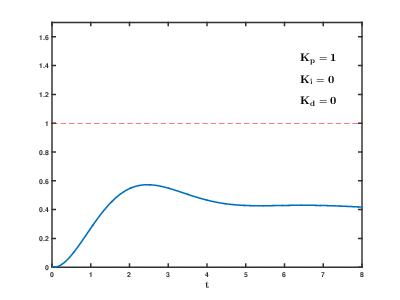In the control theory dealt in class I was taught to always linearise a nonlinear system around an equilibrium point, i.e., where $$\dot x = 0$$
However, linearization is a Taylor series expansion, so why the equilibrium point in particular? What happens if you don't use it?
I know that if the system is at the equilibrium states then the system is 'unperturbed' and will continue to stay in unperturbed state unless given an external disturbance / excitation / input. If you give an example please use non-zero equilibrium states.

Best Answer
When using Taylor series, there are two fundamental choices to be made:
The truncation of the Taylor series causes the linearized representation to be not exact, in other words, a linearization error is incurred. This linearization error is zero at point \$x_0\$. The further away you take the system from \$x_0\$, the greater this error is in magnitude.
The equilibrium point is frequently a sensible choice for \$x_0\$ when it is inferred that the system oscillates or gravitates around this point. Depending on application, this may change. If I were to word a statement on how to choose a center point \$x_0\$ for Taylor series, it would be something like this:
"Systems should be linearized around a point \$x_0\$, in such way that the choice of \$x_0\$ minimizes linearization error for all expected system trajectories. If the system oscillates or gravitates around an equilibrium point, then this is a sensible choice for \$x_0\$."
A choice of \$x_0\$ that does not follow such guidelines would lead to a linearized model that does not represent, within acceptable tolerances, the non-linear system.